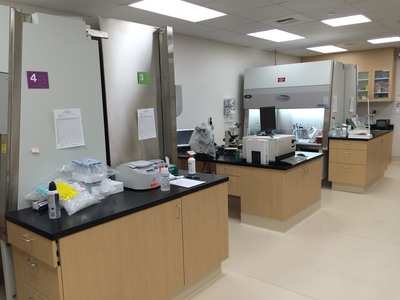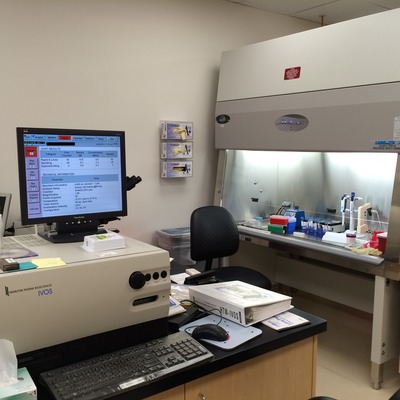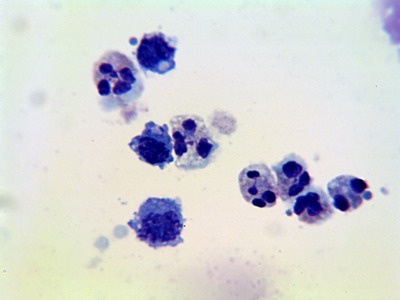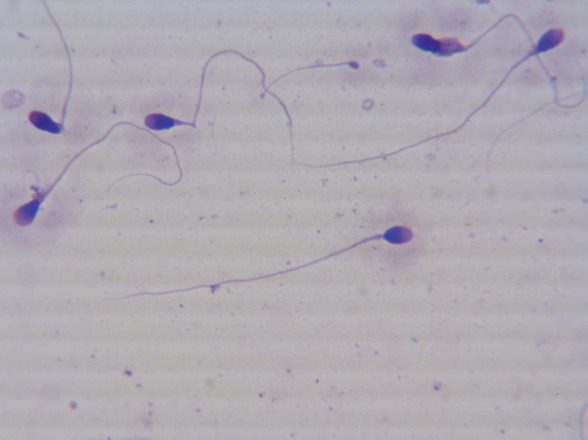
Sperm Morphology. The shape of fixed and stained sperm is assessed using Strict (“Kruger” or “Tygerberg” method) Criteria. The width, length, and shape of the head, size of the acrosome, presence of vacuoles, size and shape of the midpiece, and length and appearance of the tail are taken into account. Abnormalities have been linked to poor fertilization. Acrosome abnormalities (too small or missing) would lead to a lower chance of fertilization. Midpiece and tail abnormalities may explain poor motility. At left: Only 1 normal sperm at center; others have head, midpiece, and tail defects.
Reference Range: ≥ 4% Normal* Teratozoospermia Index (TZI) ≤1.74
Others consider Abnormal to be < 9%, and Borderline or Indeterminate ≤12% Normal
Below: 3 PMNs (Neutrophils) in semen
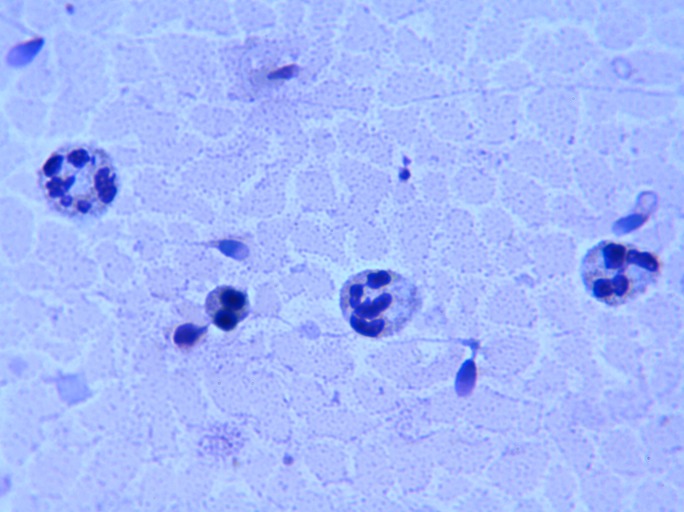
White Blood Cell Differential - performed as a reflexive test if more than 1000 Round Cells per cubic millimeter are present. Leukocytes (WBCs) can cause obvious damage (low motility, sperm death). They can also cause cryptic (hidden) damage, such as DNA fragmentation or modification of essential sperm surface molecules.
Presence of WBCs (usually neutrophils or macrophages) is a sign of inflammation or other immune response, and not usually an indication of an infection. Leukocytes must be differentiated from the other type of round cell, immature germ cells (spermatocytes and spermatids). Although there are some tricks for identifying WBCs in a wet mount, such as presence of granules or staining for peroxidase, these are not perfect. A stained smear and 1000x microscopy are best, and this is what we do when there are at least 1 million suspected WBCs per mL.
Other types of non-sperm cells often present are skin cells (epidermal squamous epithelium) and cells from the upper urethra or bladder (urothelial cells, transitional epithelium). These are not counted as “Round Cells”. The presence of either type is usually not a cause for concern, although these cells may carry bacteria into the semen.
Reference Range: ≤ 1 million WBC per mL*
We consider levels ≥ 0.75 million to be of concern.
Levels >0.2 million are related to increased Reactive Oxygen Species.
*Reference: World Health Organization 2021 WHO Laboratory manual for the examination and processing of human semen. WHO (6th ed.). Values are the lower 95% Confidence Interval of the 5th centile of all subjects whose partners conceived within 12 months. All other Reference Ranges are MFL Ranges.
